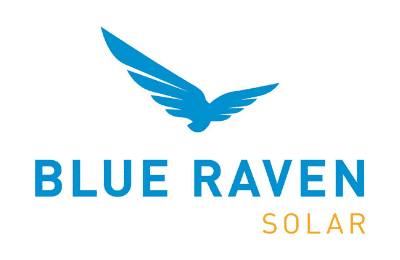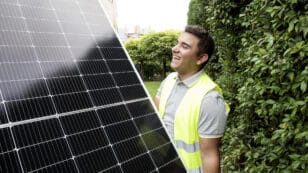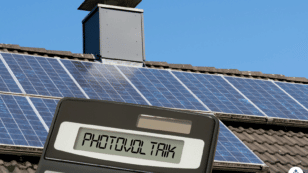
Is Solar Worth It in Oregon? (2024 Homeowner's Guide)
Here’s a quick overview of solar viability in Oregon:
- Oregon ranks 21st in the country for solar installations*
- The average electricity rate is 13.12 cents per kilowatt-hour (kWh)**
- The average solar payback period is 13 years***
- Homeowners are eligible for the Oregon Solar + Storage Rebate Program and the federal solar investment tax credit (ITC)
- The average homeowner saves $21,976 over the lifetime of their solar system***
*According to the Solar Energy Industries Association.1
**Data from the Energy Information Administration.2
***Calculated assuming the system is purchased in cash.
Each product and or company featured here has been independently selected by the writer. You can learn more about our review methodology here. If you make a purchase using the links included, we may earn commission.
Oregon ranks 21st in the country for solar installations, and residents pay less than the national average for electricity. Since solar primarily saves money on electric bills, many Oregon homeowners wonder if solar is worth the large investment. In most cases, it is, but it’s not right for every home, so you need to be able to determine if yours is a good candidate for solar conversion. Below, we’ll discuss the most important metrics you can use to figure out if solar is a good fit for your property. We’ll also explain the many benefits of installing solar panels in Oregon and a few things you should consider along the way.
To speak with an EcoWatch-vetted professional who can help you determine whether solar is worth it for your Oregon home, follow the links below.

Sunlight Solar Energy

Regional Service
Average cost
Pros
- Many years of experience
- Offers products from leading manufacturers
- Excellent reputation
Cons
- No leases or PPAs
- Limited warranty coverage
- Expensive

Blue Raven Solar
Pros
- Industry-leading in-house financing
- Competitive pricing
- Excellent reputation
Cons
- Doesn't offer solar batteries (coming 2022)

Blue Raven Solar
Pros
- Industry-leading in-house financing
- Competitive pricing
- Excellent reputation
Cons
- Doesn't offer solar batteries (coming 2022)
Watch Below: Learn How Solar Panels Are Becoming So Efficient
How to Figure Out if Solar Panels are Worth It in Oregon
Solar panels end up being a great investment for most Oregonians, but they aren’t guaranteed to save every homeowner money. Below are some of the best metrics you can use to determine your solar viability.
What’s Your Home Electricity Consumption?
First, you’ll want to look at the average monthly amount of energy your home uses, which you can check on your past electric bills. A good rule of thumb is that solar is valuable for households that consume more than 500 kWh every month. The closer you are to that number, the less value you’ll receive, and much higher consumption rates will yield greater returns. The average home in Oregon consumes around 916 kWh every month. This is just slightly above the national average, meaning solar is a bit more valuable in Oregon than in most states based solely on energy consumption. It also sits well above the cutoff of 500 kWh, making solar conversion a valuable investment for most residents in the Beaver State.
How Much Is It To Go Solar in Oregon?
The price of solar panels in Oregon averages around $3.28 per watt, which is lower than the average of $3.33 throughout the country. Not only is solar equipment more affordable in Oregon than in most other states, but residents need a smaller-than-average system size, further driving down the upfront price. With a standard size of 9.5 kW, the average Oregon resident pays around $21,812 for solar panels after the federal tax credit. Solar panels provide greater returns on investment (ROI) where electricity rates or energy usage are high. Electricity prices are below average, and energy usage is above average in Oregon, meaning solar is about as valuable in Oregon as it is in the rest of the country.
What’s the Payback Period for Solar in Oregon?
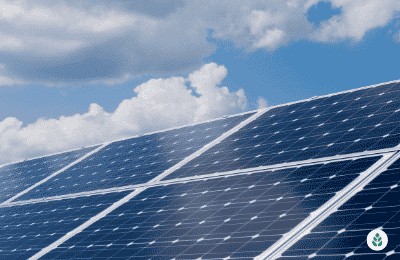
What Are Average Buy-Back Rates in Oregon?
Most states have a mandated net metering program, which allows solar customers to produce excess energy with their panels and then sell that additional power to their electric utility companies to offset future energy bills. A positive net metering policy makes it far more likely that you’ll eliminate your electric bills. Oregon has an excellent net metering policy that mandates net metering at the full retail rate for all investor-owned utilities (IOUs) except Idaho Power. That means you’ll be compensated for your overproduction at the same per-kWh rate you’d pay for energy you pull from the electric grid. In areas where the buy-back rate is below the retail rate, many homeowners need solar batteries to eliminate their power bills, but that’s not the case for most Oregonians.
How Much Sun Does Your Roof Receive?
Solar panels are most useful where there is abundant sunshine, as they produce power from the sunlight they absorb. Oregon is well known for being a rainy state, receiving only about 143 sunny days per year. This pales in comparison to the national average of 205 sunny days. From a sunlight availability standpoint, Oregon is far from the best state for solar panels, although many homeowners still benefit from converting and still see massive returns. You also need to assess your individual home, as there are some property-specific factors that affect how much sunlight your panels receive. For example, the direction your roof faces is an important thing to consider, as south-facing roofs in the US are best suited for solar panels, and some west-facing roofs can work as well. East- and north-facing roofs generally aren’t suitable for solar. Shading on your roof from trees or buildings can also reduce your solar panels’ value, as any obstruction will mean lower production and fewer savings.
What’s the Outlook on Solar in Oregon?
Oregon is considered an environmentally-friendly state, and renewable energy sources are very popular in the area. While solar certainly has its place in the Beaver State, hydropower is the most widely used clean energy source, providing the most energy of all resources in Oregon.3 Natural gas and coal are the second and third most widely used sources of energy, followed by wind power. As such, solar takes a back seat in terms of energy production. The solar market is smaller in Oregon than in many states, but Oregon still ranks 20th in the country for solar conversions. Residential solar installations have become more popular nearly every year for the past decade, and the growth shows no signs of slowing. Utility-scale solar is also wildly popular in the state. Oregon’s solar-friendly policies should help the market expand in the future, although there’s no telling if it will surpass hydropower in terms of statewide production.
Benefits of Solar Energy in Oregon
Oregon is a great place to go solar because there are many benefits afforded to solar customers in the state. We’ll discuss the most significant upsides of going solar below.
Electricity Bill Savings
The biggest financial incentive of going solar is the reduction you’ll enjoy on your electric bills. When your solar panels produce energy, they decrease the amount of power you need to pull from the grid and save you money. The average Oregon resident pays around $120.18 per month for electricity, which means eliminating your power bills — which is possible with the state’s great net metering policy — could save you around $1,442 per year. Over the lifetime of your panels, they are expected to pay for themselves in around 13 years, after which they provide an average savings of about $21,976! This is a massive return on investment that most residents find very appealing. Plus, your panels will help you avoid future hikes in energy rates, so your total savings could be even higher.
Lower Taxes & Access to Other Incentives
Oregon is considered quite solar-friendly, in large part because the state and federal governments provide solar customers with many solar incentives. One of the most substantial incentives is the federal solar tax credit (ITC), which is a credit to your federal income tax liability for a massive 26% of your total system expense. In Oregon, the ITC received by most homeowners will be around $9,348. Some additional Oregon solar incentives are mentioned below:
- Oregon Solar + Storage Rebate Program: This is a rebate program from the Oregon Department of Energy (ODOE) for solar customers who install panels and a battery backup system. It’s for 40% of your installation expense, up to a maximum of $7,500.
- Solar Electric Incentive Program: This is a local rebate for customers of Portland General Electric (PGE) and Pacific Power. PGE customers can get up to $1,200, and Pacific Power customers can get up to $900 back for going solar.
- Solar Within Reach: This is a solar incentive for low-income households that effectively reduces the price of solar equipment to make it more affordable and accessible.
- Renewable Energy Systems Exemption: This is a property tax exemption that prevents your property taxes from going up as a result of solar panels bumping up your home value.
- Net Metering: As mentioned above, net metering is mandated at the retail rate for all investor-owned utilities, except Idaho Power. Net metering helps eliminate your electric bill, which reduces your payback period and increases your total ROI.
Home Resale Value Increase
Solar panels make your home more valuable, which is a massive benefit for Oregon residents, where property values are relatively high. According to estimates from Zillow, most homes will go up in value by around 4.1% with the addition of a solar panel system.4 In Oregon, where the average home value is $483,939, most residents will see an increase of around $19,841 in value!5 The actual dollar amount of your value bump will likely be higher in more expensive areas, like Portland and Salem. It’s important to note that the increase in home value after going solar will only apply to residents who use a cash purchase or a solar financing option to buy their panels. Solar leases and power purchase agreements (PPAs) won’t make your home more valuable and can actually have the opposite effect.
Clean, Renewable Energy
Given that Oregon is an eco-friendly state, many homeowners will also care greatly about the environmental benefits of going solar. Installing solar panels means you’ll reduce your reliance on fossil fuels, which in turn reduces your carbon footprint and the pollution you ultimately produce. You’ll also increase your energy independence, which lets you avoid energy price increases in the future.
What to Look Out For When Considering Solar in Oregon
Even once you decide that solar is a worthwhile investment for your home, you’ll still have quite a few things to consider before you have your panels installed. We’ll include some information on additional considerations and decisions you’ll have to make below.
Upfront Fees
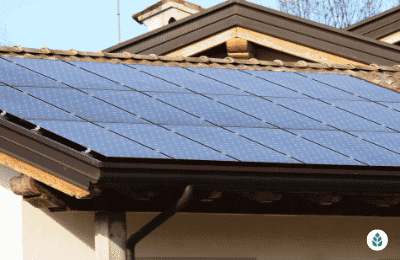
Payback Period
Your estimated solar panel payback period — if calculated correctly — is one of the best metrics for solar viability, but you can also use it to determine how much your solar power system is expected to save you over time. The average payback period in Oregon is 13 years, with a normal range of 10 to 16 years. If your payback period is longer, it will take you longer to recuperate your investment, and you’ll save less than the average of $21,976 in your area after the panels pay for themselves.
Net Metering Policies in Oregon
Thankfully, the Public Utilities Commission (PUC) in Oregon mandates net metering for all investor-owned utilities, which means most solar customers in Oregon will have access to net metering at the full retail rate. However, the exact policies can vary among power companies, so you should check with yours before signing anything. If you happen to have a less appealing program available, you can add a solar storage system to your panels to help eliminate your electric bills. This will add thousands to your total expenses but will often pay for itself.
Pending Policies & Changes to Incentives
As the solar industry continues to mature and expand, the policies and incentives available in Oregon can change, so you should always do some research before committing to solar to look for alterations. The policies mentioned above can change, new solar rebate programs could come up and existing incentive programs could expire. It’s worth noting that it’s not usually worth it to wait for better incentives, as you’ll be missing out on savings in the meantime.
Weather & Climate in Oregon
With just 143 sunny days per year, on average, Oregon is far from the best place for solar panels in terms of sunlight availability. Residents understandably worry that the abundant rain and cloudy days will reduce panel efficiency. Solar production can drop as much as 90% on cloudy days, but residents in the area still find that there’s enough sunlight to make solar a worthwhile investment. The rain will simply serve to keep your panels clear of dirt and debris, which will keep efficiency at its peak for sunny days. Solar customers who understand that solar panels are more efficient closer to the equator also worry that the northern location of Oregon is an issue for panel production. Again, the sunlight available in the area will mean a payback period that’s slightly longer than average, but the outstanding solar policies and incentives plus the decent amount of sunlight make the Beaver State well suited for solar overall, despite its geographical location.
Companies Pushing Solar Leases or PPAs
Finally, you’ll want to be prepared to choose the best solar panel installation company possible, as not all solar companies are created equal. You should be on the lookout for companies offering “free solar panels,” which is really just a marketing tactic to get you to sign a solar lease or power purchase agreement (PPA). Solar leases should generally be avoided, as they don’t provide the same benefits — like boosted home value, massive savings and the federal tax credit — that buying or financing your panels would. Unfortunately, there have been many solar scams reported throughout Oregon. Some companies operating in Oregon — including Solar Partner Inc., Solar America and Quantum Solar — have been found to offer incentives that don’t really exist in an effort to get business.5 There have also been reports of an illegitimate company named “Portland Solar Energy Department” that tries to get solar contracts signed but never actually installs systems. To avoid these scams and others, it’s best only to work with a vetted and reputable solar installer with a history of positive customer reviews.
Wrap Up: Is Solar Worth it in Oregon?
For most Oregon homeowners, installing solar panels will be an expensive endeavor that is well worth the investment. However, while most Oregonians will save large sums of money by converting to solar, solar panels aren’t suitable for every home or every budget. It’s important to be able to assess your home’s solar viability before you commit to this renewable energy source. Some things you’ll want to take into consideration include your monthly energy consumption, your total system expense, the system size you need for your home, shading on your roof, and more. We suggest getting in touch with a reliable and experienced solar installer in your area to help you decide if going solar is a good investment for you and your home.
See also: Calculate the costs and savings you can get from installing solar panels
Read More About Going Solar
- What Are the Most Reliable Solar Installers in Oregon?
- What Solar Incentives Are There in Oregon?
- Find Cost Savings on Solar in Oregon
The cost information presented in this article is derived from a comprehensive analysis, incorporating data from multiple industry sources. The average cost per watt per state was calculated based on figures from Consumer Affairs, Energy Sage, and Berkeley Lab’s Electricity Markets & Policy Department. Additionally, monthly energy consumption and the average monthly cost of electricity were sourced from the U.S. Energy Information Administration, ensuring a well-rounded and accurate representation of the information presented.
Frequently Asked Questions
At EcoWatch, we’re pleased to get questions regularly from Oregon homeowners about the potential savings solar can bring them. Below are some of the things we get asked most often, along with our responses. If you have specific questions that aren’t answered here, reach out to our team of solar experts at solar@ecowatch.com.
The average solar panel payback period in Oregon is 13 years, and most homeowners have an estimated payback period of between 10 and 16 years. If you estimate your payoff timeline at longer than 16 years but under 25 years, you’ll still save money with your system, but your ROI will be lower than average. With a payback period of over 16 years, you’ll just need to decide if going solar makes sense with your financial situation.
In most cases, yes, installing solar panels will save you a significant amount of money in Oregon. The average homeowner in Oregon spends around $120.18 per month on electricity. With Oregon’s great net metering program, you could eliminate your energy bills entirely, which means you could save around $1,442 per year in energy bills. After your system pays for itself, it’s expected to save you an additional $21,976 over the remaining lifespan of the equipment.
Yes, solar panels will cause your property value to increase, as long as you buy the panels using cash or a solar loan. The estimated value increase from going solar, according to Zillow, is around 4.1%, which comes out to an average bump in the value of approximately $19,841 in Oregon. Oregon also offers a property tax exemption for solar equipment, which means this value increase won’t cause your property taxes to go up.
Yes, building permits are required for solar panel installation in Oregon. Permits help guarantee that your system is installed safely and properly and that your home can structurally support the weight of your rooftop solar panels. Your solar installer will typically pull and close permits for you as a part of the installation process.
You can DIY solar panel installation in Oregon, but it’s generally not a great idea. Installing solar panels yourself puts your property and photovoltaic equipment at risk of damage, not to mention that you’ll be opening yourself up to injury as well. We strongly recommend letting a professional solar installer tackle your solar project for you.
Top Solar Installers in Oregon Cities
Comparing authorized solar partners
-
- Many years of experience
- Offers products from leading manufacturers
- Excellent reputation
- No leases or PPAs
- Limited warranty coverage
- Expensive
A+Solar Veteran
Having trouble deciding? Click below and use our process to receive multiple quotes instead:

 233k
233k  41k
41k  Subscribe
Subscribe 
